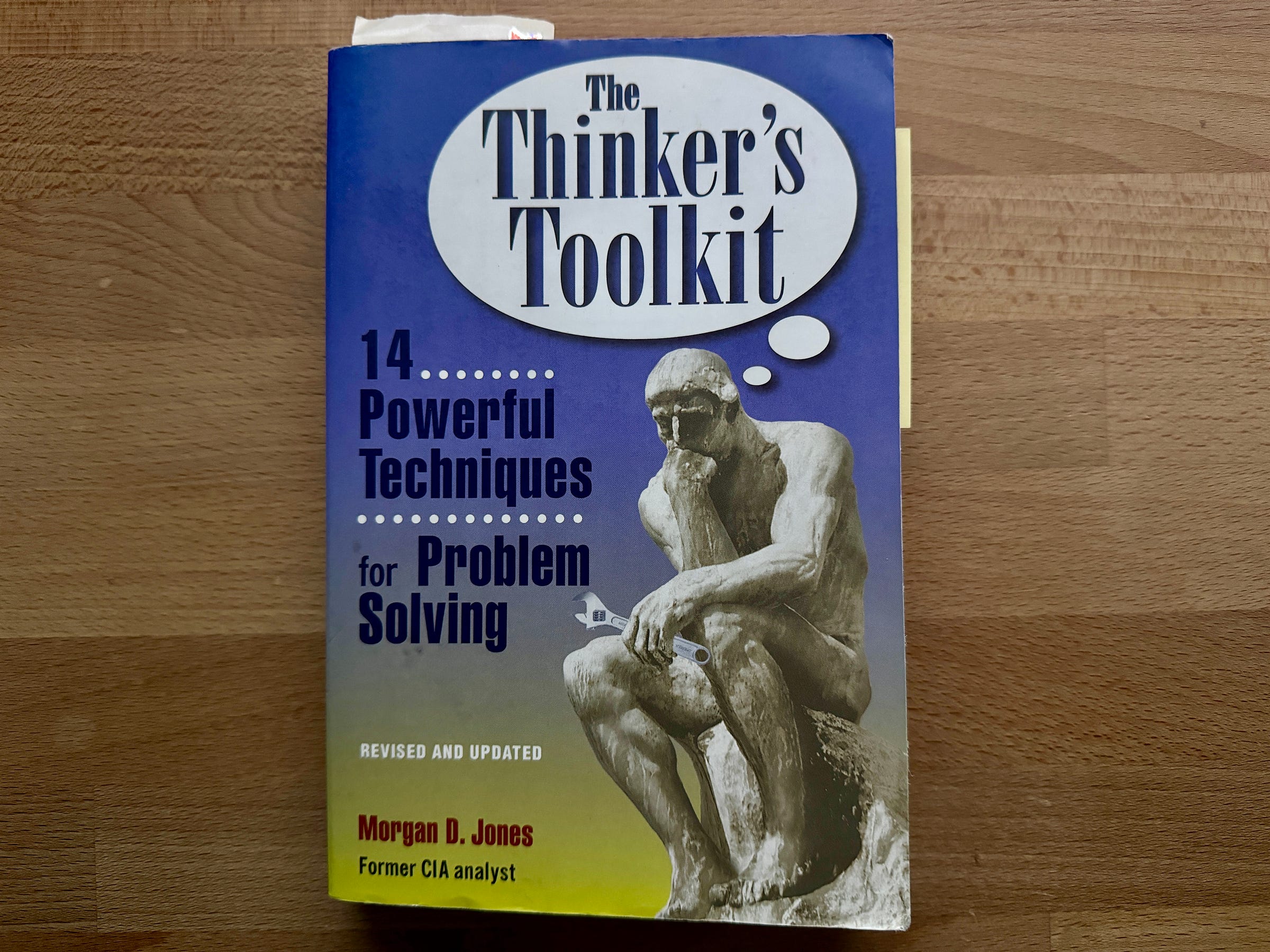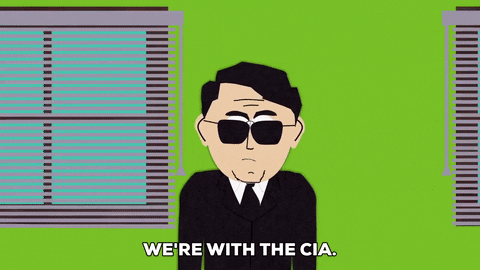How the CIA Would Evaluate Climate Tech
A 4+1 Framework for Rapid Evaluation of Climate Technologies
👋 Hej to 2,742 climate buddies 🌳
Climate is not a technology problem but a story problem.
Delphi Zero is a consultancy and newsletter dealing with the exciting and beautiful world of climate tech.
📧 If you are opening this essay in your email inbox, I recommend to click on the title of this piece to enjoy the full-length version in the browser.
Hi, everyone. It’s been almost two months since the last post.
How are you doing? What’s on your mind? Respond to this mail. Would love to hear from you.
Last month, I attended Europe’s top climate conference The Drop in Malmo.
My pal Ben asked me if I wanted to co-host a learning session titled: Building the Climate Tech Infobahn: How to design climate tech learning.
In preparation for the session, we surveyed our participants and asked them what they wanted to get out of it.
One response caught my attention:
I’d like to have a framework that I can use to evaluate any climate technology in 30 mins.
Today’s essay is about a simple 4+1 framework I use regularly 👇
How the CIA Would Evaluate Climate Tech
By Art Lapinsch
My framework has 4+1 parts - like four branches and a tree trunk.
The Tree of Climate Tech:
🌳 Environment: Is it good for the environment?
🤖 Technology: Does the technology work?
⚖️ Law: Is it legal?
💶 Economics: Is it economically feasible?
💚 [+1] Desire: Do people want it?
Get these right, and your climate technology has a fighting chance.
How did this framework come about?
What’s Good Enough for the CIA Is Good Enough for Me
If you are a long-time reader (hi there 😉), then you know that - once upon a time - I was a founder.
Our line of business was programmatic advertising - a highly technical endeavor. As a business generalist by training and vocation, I felt like I was coming with a knife to a gun fight. Poorly equipped.
I turned to my co-founder Mike, who was a programmer by training but turned into commercial leader/legend at Google Asia. My question to him was simple: What was the single most helpful book he had read?
His answer surprised me. He advised me to study this book 👇

The book is a collection of 14 practical thinking techniques (problem restatement; pros-cons-and-fixes; causal flow diagramming; scenario tree; utility matrix; etc.) that three-letter agencies use on a daily basis.
I was expecting a book about technological concepts. But instead it was a collection of problem solving methods.
My takeaway: It helps to get a grasp of the big picture of a problem before diving into the small details.
Similarly, it helps doing a high-level evaluation of a (climate) technology before diving into the weeds. What works for the CIA should do just fine for our use case.
So let’s move to a higher vantage point when evaluating climate tech 🦅
Four Fundamental Elements of Climate Tech
In my essay “The Gordian Knot of Climate”, I developed an early working hypothesis.
These updated questions are specifically geared for quick evaluation of climate tech:
1) Environment 🌳
Start with the fundamentals:
Net GHG Impact: Does it emit or remove GHGs? What’s the difference compared to conventional technologies?
Greenhouse Gases (GHGs): If yes, which ones (quality) and how much (quantity)?
Other Impact: Does it have a positive/negative impact on other vectors besides GHG concentration in the atmosphere (ppm/ppb)? Biodiversity; resources; etc.
You can see an example in Chris Bernkopf’s “The $40T Market Hiding in Plain Sight.”
These are table stakes.
If this is not covered then we cannot really talk about “climate tech.”
2) Technology 🤖
Map out how the technology works on a napkin:
Technology: Is it an idea, an experiment, a demonstration unit, or a commercially-ready technology (i.e. Technology Readiness Level - TRL 1-9)?
I/O: What are the inputs and outputs of the technology? (e.g. for fermentation: feedstock → culture → product; for chemical reactions: reactants → reaction → products; for IT: input data → algorithms → output data; etc.)
Process: What exactly happens during the transformation from inputs into outputs? How long is the process? Does the process degrade over time? Are there step changes along the way? etc.
Resources: Inputs/outputs (types; quantities; ratios); Energy usage (quality; quantity); etc.
Constraints: Does the tech need a particular location (e.g. pumped hydro needs elevation δ)? Does the tech need particular conditions (temperature; altitude; pressure; etc.) to operate? etc.
A master at technology evaluation is my famed pal Ben.
In his series about climate molecules, he unpacked the most common methods of producing Synthetic Aviation Fuels (SAFs).
Once you have a back of the napkin understanding of the technology, you can probe deeper or start calling BS.
3) Law ⚖️
Legal departments can be party poopers in most industries, but in climate, you better start building rapport with those folks.
Climate - together with financial services and healthcare - is probably one of the most heavily regulated spaces.
Start asking the following questions:
Policy: What are current policy objectives in your relevant area? What are its resulting policy instruments (i.e. laws; acts; regulations; directives; etc.)?
Incentives and Constraints: What is legal? What is illegal? Are there any provisions that the climate technology in question can take advantage from (e.g. subsidies/benefits; extension to existing site/permit like the Hywind/Tampen wind park)?
Legal Coverage: Which law applies (which country; which state; cross-border issues)? Which levels of the law apply (civil code; energy law; renewables laws; international law/treaties; etc.)? What is regulated and what isn’t? Which laws are about to change (new laws; updated laws; phased out laws; etc.)?
Protection: Is this technology patented? Who owns the patent? How long does it last? What’s the coverage of the patent?
All these environmental, technical, and legal considerations give you enough information to evaluate the money matters 👇
4) Economics 💶
Technology needs to be paid for.
If something is vastly more expensive than existing alternatives, there’s very few cases (e.g. national security interest; policy-aligned kickstarting of a market; etc.) where it would make sense to pay for it.
So, check if the numbers pan out:
CAPEX: How much does it cost to build the thing? How do you finance it (no funding = no prototype; no prototype = no validation to de-risk the investment)?
OPEX: How much does it cost to operate the thing? Does that change (up/down) over time or with more scale?
Business Case: Who is paying, how much, when, and how? Why? How long does it take to recoup all expenses (if ever)? Is this an existing business model or do you have to introduce a completely new business model? What is novel about it (e.g. audience; business model; delivery method; etc.)?
So far so good.
One Additional Critical Element of Climate Tech
Now, let’s imagine, we have a climate technology that checks our first four boxes:
✅ Environmentally friendly → no GHG emissions during operation
✅ Technologically feasible → uses electricity as an input instead of gas
✅ Legally in the clear → consumer technology that complies with all regulations
✅ Commercially sound → cheaper to acquire and operate
But still, some people don’t want to use it.
I’m talking about the good ol’ Induction Stove.

5) Desire 💚
A technology can be better on pretty much any parameter but as long as people don’t have a desire to use it, they won’t use it.
Or worse, they will make a point to oppose it.

So, despite evaluating the technology, don’t forget to think about the demand in the market.
Market Education: Do people understand the problem? Are people aware that there are solutions/technologies?
Language: Is there an established language to talk about their problems/solutions? If not, how difficult is it to introduce it and how long would that take?
Market Demand: Are there existing budgets in the market? Do people want/need this technology now? What is the technology competing with (functionally; budget-wise; positioning-wise in the customer’s mind; etc.)?
To repeat one of my favorite entrepreneurial truisms: I’d much rather play in a supply-constrained market with existing demand than the other way around.
The Tree of Climate Tech: A 4+1 Framework
To summarize, one of our participants asked:
I’d like to have a framework that I can use to evaluate any climate technology in 30 mins.
I hope that this 4+1 framework answers this question and that the next time you’ll evaluate a technology, you’ll feel like a secret agent.
Remember - The Tree of Climate Tech has four branches and one trunk:
🌳 Environment: Is it good for the environment?
🤖 Technology: Does the technology work?
⚖️ Law: Is it legal?
💶 Economics: Is it economically feasible?
💚 [+1] Desire: Do people want it?
Get these right, and your climate technology has a fighting chance.
🙏 Thanks, Ben and Miroslav for listening to a rough version of this framework.
Get in touch via Linkedin if you want to chat about ideas, projects, or a potential collaboration✌️









Really enjoyed this one! Cool toolkit in pmf explorations. Oh, and the book sounds like a must-read